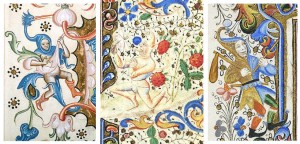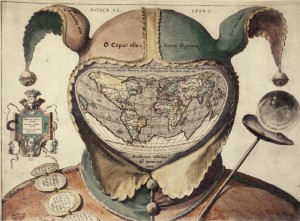
None of my Facebook friends have inexplicably broken up or gotten engaged or announced they’re expecting today, so unless they’re planning to change their statuses later tonight to, “Hahahaha!! We’re totally [getting married|breaking up|in the family way] today, but we kept quiet as a big reverse April Fools!” it looks like people have finally started to remember that April Fools jokes are lame. Color me relieved. I mean, it’d be really cruel of me to write a post today promising a new schedule of near-constant updates, wouldn’t it? ((I’m optimistic about a resumption of previous levels of blogawesomeness, but only time will tell.)) Nevertheless, as a little “Hey, I’m still alive” post, here’s a handful or medieval fools for you to celebrate this first day of April by gazing upon.
One thing you might not realize about fools is that the pointy-hatted, bell-jingling fool like the one in the image at the top of the post is more a Renaissance thing, or perhaps more properly a Renaissance depiction of what Renaissance artists thought a proper medieval fool ought to look like. (Really, to tell you the truth, most of the pieces of medievalia you ((OK, OK, not you, dear intelligent reader, but all the other people who read this blog.)) associate most with the period are actually parodies from the Renaissance or Victorian re-imaginings, but that’s a tale for another time.) But here’s a late medieval fool who’s clearly trending that way:
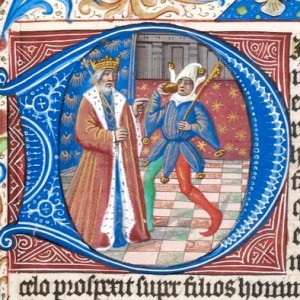
Actually, the late-medieval/early-Renaissance fool hat is kind of a combination of two previous types of hats. The first, usually without bells, had a single curly-pointed peak. More like Tingle from the Legend of Zelda. Here’s a trio of marginal versions, including one wearing a diaper while eating a dragonfly, one pointing and laughing at the suffering Christ ((Suffering Christ demanded too much on the back end, so I cropped him from this shot.)), and one who, come to think of it, is basically wearing the Minish Cap:
The other hat had two peaks and bells, but was flat across the top, more like a mortar-board than like the stuffed bananas of later, like so:
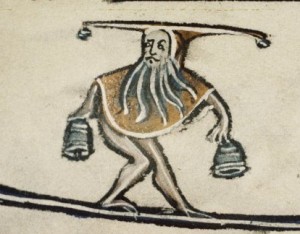
Or so:
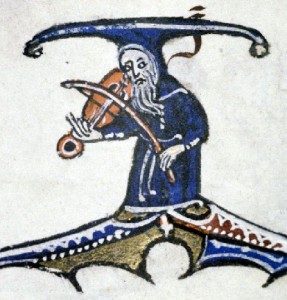
The be-hatted fool grows increasingly rare the further back you go in medieval history. Prior to the fourteenth century, you’re far more likely to see this guy instead:
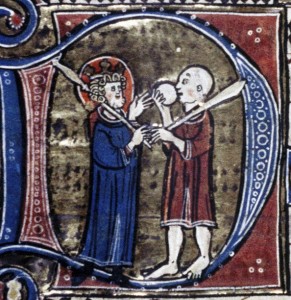
That’s him on the right there, the bald one holding a stick and a ball. Hilarious, I know! Just think of all the funny shenanigans a guy with a stick and a ball can get up to. Like, for instance, he could just sort of stand there holding his stick and ball:
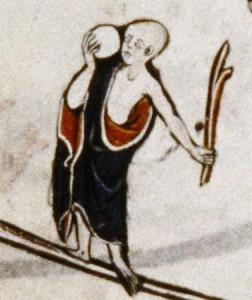
Or, better yet, he could stand there holding his stick and ball but facing the OTHER direction!
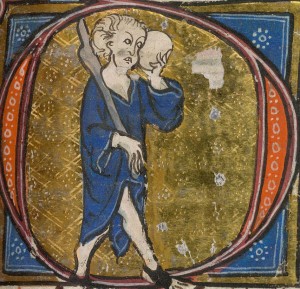
I think it’s clear why the later look caught on. The fool needs fewer props to be recognizably foolish, allowing him to actually do something funny instead of just standing there holding his props all “Hey, get a load of me, I got a ball AND a stick here.” ((I think I should mention that in my head all the early bald fools talk with Rodney Dangerfield’s voice. And all they talk about is how hard it is to get respect while holding their sticks and balls.))
If I were commissioning a manuscript, though, I’d probably opt for monkeys instead. They work cheaper and they’re at least 28% funnier just on face value. I’m not the first to have had this thought, naturally:

As I often have occasion to wonder–monkeys, is there anything they can’t do?
